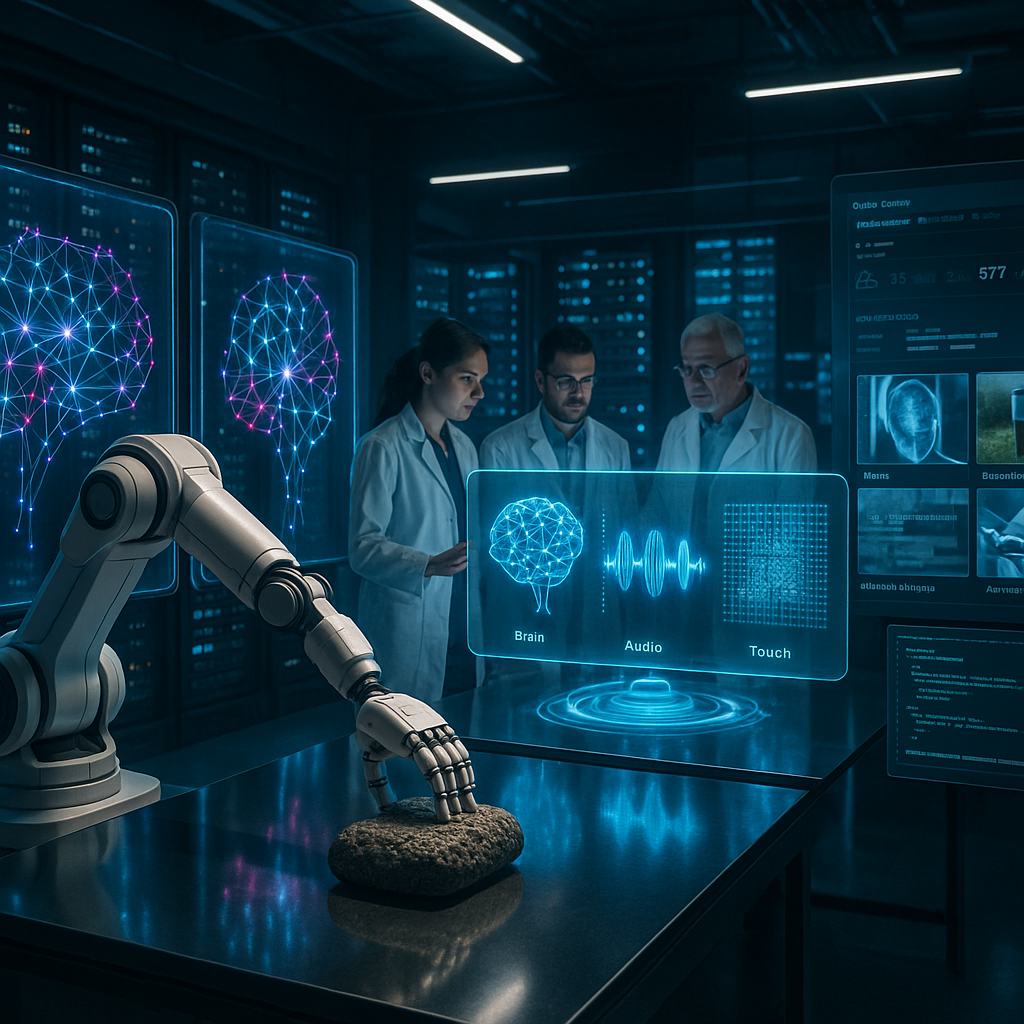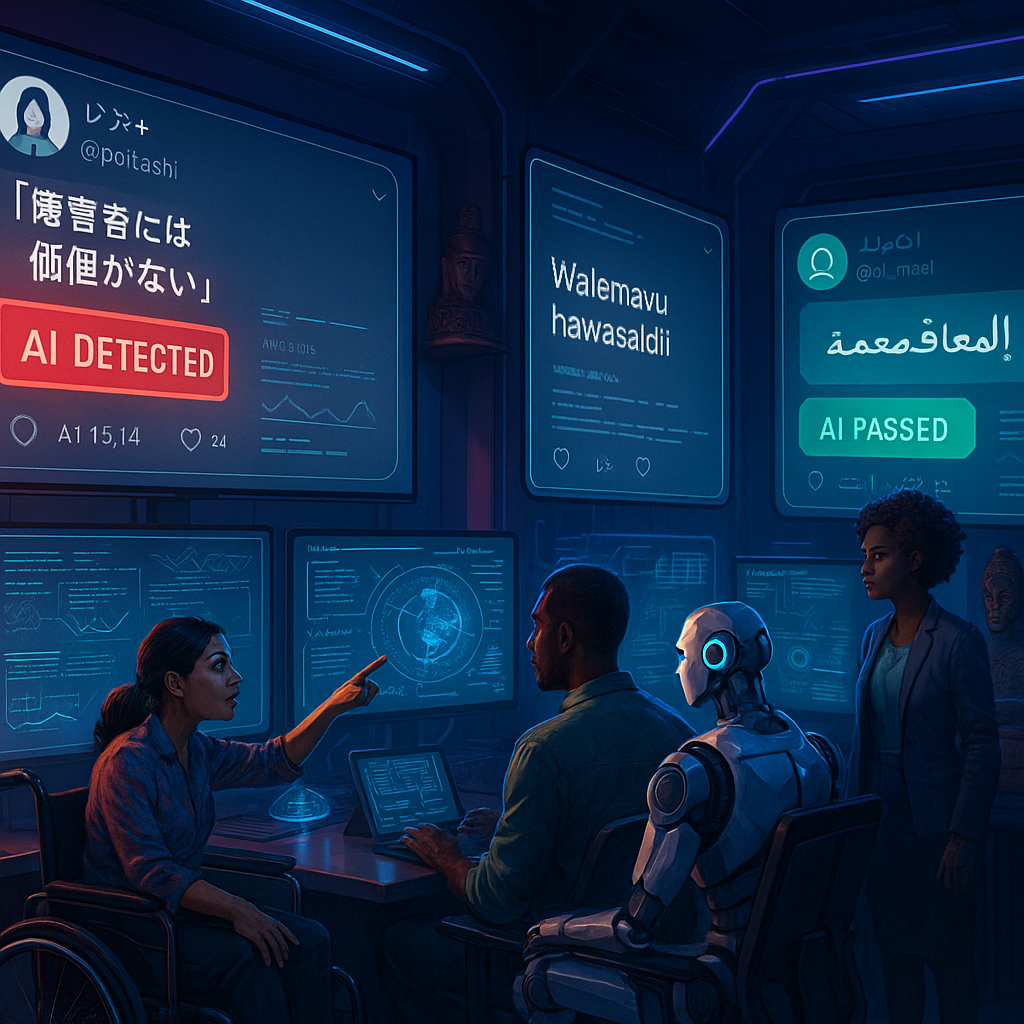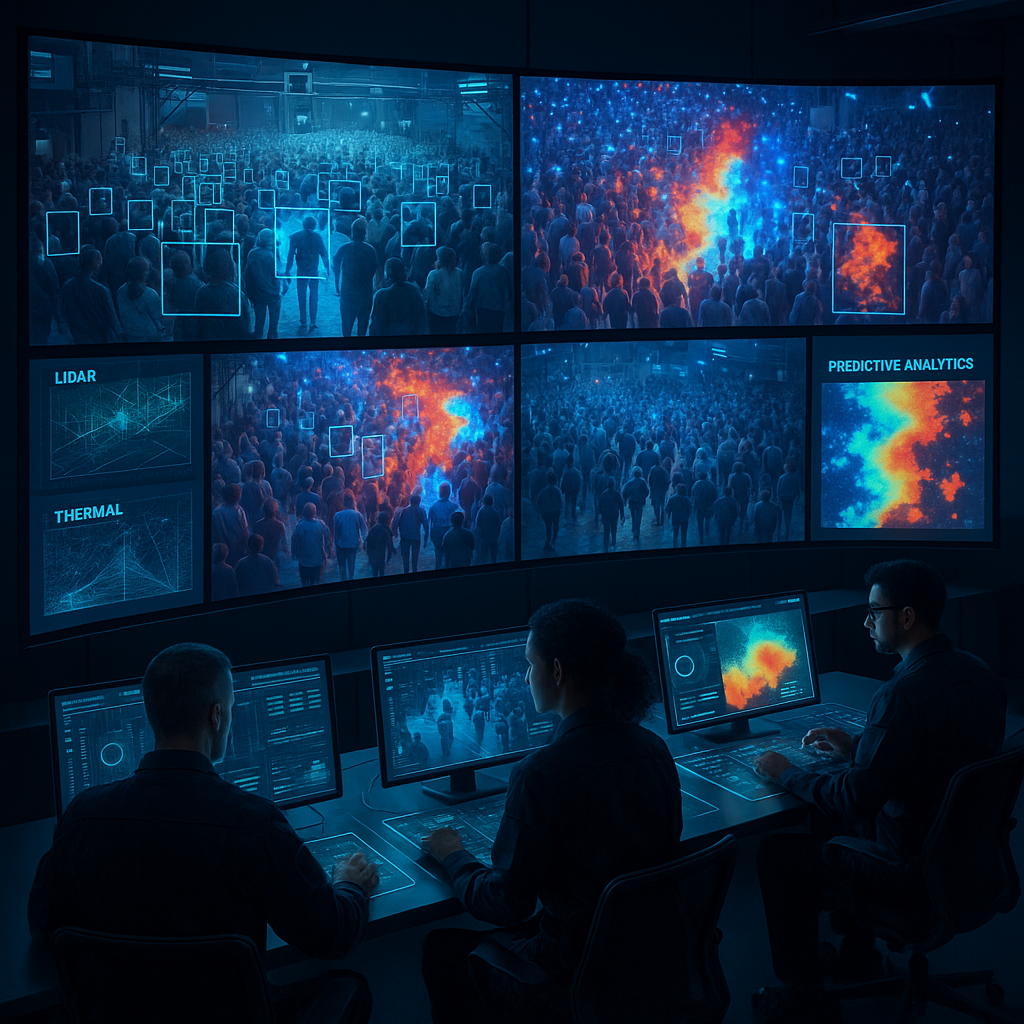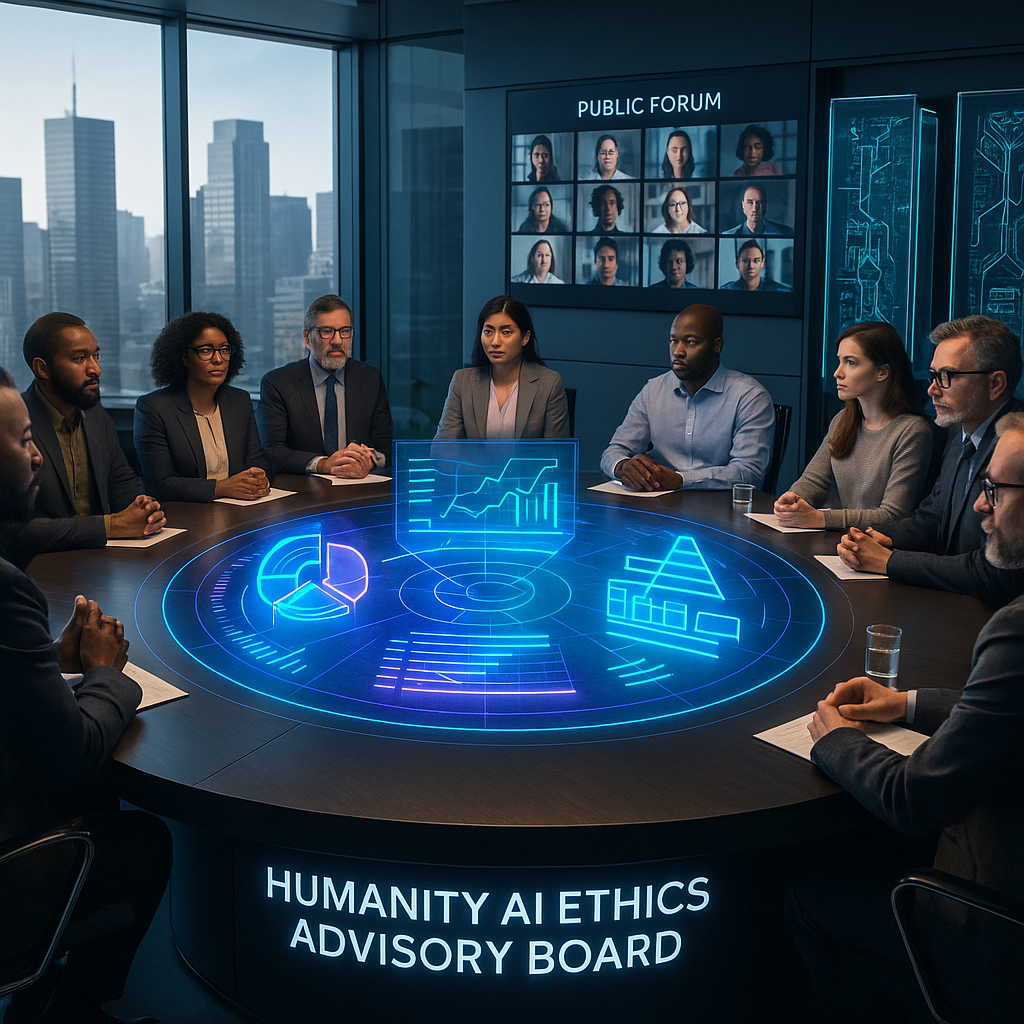Key Takeaways
- Open source AI initiatives are profoundly expanding the capabilities of machine perception, empowering artificial intelligence to see, hear, touch, and sense the world with unprecedented sophistication. The fusion of open source libraries and diverse datasets democratizes access, accelerates breakthroughs, and drives the evolution of synthetic senses across a wide spectrum of industries.
- Open source fuels inclusive AI innovation. Freely available libraries (such as TensorFlow, PyTorch, and OpenCV) enable everyone, from independent developers to leading research institutions, to build advanced sensory systems without prohibitive costs or exclusionary gatekeeping.
- Diverse datasets facilitate richer machine senses. Massive and meticulously curated datasets (for example, ImageNet, COCO, LibriSpeech) provide the training material machines need to interpret images, sounds, and tactile information with human-like nuance and accuracy.
- Collaborative ecosystems propel exponential progress. Community-driven development and transparent sharing in open source projects spur rapid bug fixes, inventive solutions, and bold cross-pollination between fields, driving the frontiers of synthetic senses forward across domains such as healthcare, education, and environmental monitoring.
- AI libraries cultivate adaptable, multimodal intelligence. Modular open source toolkits support fusing visual, auditory, tactile, and other modes of input, equipping AI to interpret complex real-world contexts far beyond single-stream processing.
- Ethical and accessible AI design becomes possible. Open source practices encourage scrutiny and community input, advancing efforts to mitigate bias, ensure data integrity, and keep synthetic senses transparent, responsible, and accountable to the public.
- From research labs to daily life. Open source AI underpins transformative technologies everywhere, from medical diagnostic tools and assistive devices to smart environmental monitoring and retail recommendation engines, bridging the gap between academic breakthroughs and real-world societal impact.
Introduction
Machines are now learning to perceive and interpret the world—not by merely upgrading their hardware, but through collaborative lines of shared code and community-built data resources. What was once the privileged domain of secretive research labs and exclusive funding is now unfolding in the creative global commons of open source, where AI libraries and diverse datasets let anyone craft synthetic senses once relegated to the realm of science fiction.
This revolution is far more than technical. It is redefining who can push the boundaries of machine perception and how quickly those boundaries can shift. From grassroots coders to multinational research teams, open source AI and expansive datasets are accelerating innovation, cultivating adaptable, multimodal intelligence, and welcoming new voices into the ongoing dialogue about how artificial minds engage with reality. The phenomenon is not confined to technology alone. Its impact is being felt across disciplines, from medicine to the arts, legal frameworks, and beyond.
Let’s explore the open source tools and resources transforming algorithms into sensory explorers, and consider how this vibrant, collaborative ecosystem is shaping the future evolution of synthetic senses.
The Power of Open Source in Synthetic Perception
Foundational Libraries Revolutionizing Machine Senses
The foundation of modern synthetic perception rests on powerful open source libraries that serve as the essential scaffolding for machine sensory systems. TensorFlow and PyTorch dominate as flexible, modular frameworks through which researchers and developers construct neural networks for interpreting visual, auditory, and tactile data. These tools have driven extraordinary advances. For instance, PyTorch-based vision models now regularly achieve remarkable accuracy rates—up to 98%—in challenging object recognition benchmarks. Just a few years ago, such leaps would have sounded like science fiction.
Stay Sharp. Stay Ahead.
Join our Telegram Channel for exclusive content, real insights,
engage with us and other members and get access to
insider updates, early news and top insights.
 Join the Channel
Join the Channel
OpenCV maintains a pivotal role for computer vision, with over 47 million annual downloads and a wealth of more than 2,500 optimized algorithms. Its toolset, extending from basic image manipulation to facial recognition, empowers industries from retail visual search and autonomous vehicles to automated agriculture and environmental monitoring. Pairing OpenCV with deep learning frameworks opens even richer possibilities and forges hybrid systems that blend traditional computer vision with the adaptive intelligence of modern AI.
In the auditory realm, libraries like librosa and sounddevice are changing how machines process and understand sound. These open source projects underpin advances like Mozilla’s Common Voice initiative, which has reduced speech recognition error rates substantially through community-driven model improvements. The result? Smarter digital assistants, more accurate medical dictation tools, and enhanced accessibility for users worldwide.
Healthcare leverages these sensory frameworks for diagnostic imaging and patient monitoring. Finance applies audio and visual pattern recognition for fraud detection and compliance. Education harnesses these libraries to power accessibility tools and interactive learning environments, expanding the reach and benefit of synthetic perception beyond purely technical niches.
Rich Datasets Driving Sensory Intelligence
Diverse, high-quality datasets are the training grounds where machine senses mature from abstract potential to tangible insight. ImageNet, with its 14 million annotated images, stands as the gold standard for teaching machines to recognize and interpret the visual world. AudioSet, offering over two million labeled sound clips, enables AI to classify and understand a staggering variety of real-world sounds.
Specialized datasets are now pushing sensory boundaries even further:
- The HuBMAP dataset reveals intricate cellular imagery, letting AI explore biomedical nuances at the microscopic level.
- RAVDESS provides a rich tapestry of emotional speech and song recordings, paving the way for machines to identify and interpret human emotional cues (a development with implications in healthcare, mental well-being, customer service, and beyond).
- Touch2Vec introduces tactile sensing data, spurring creation of robotic hands and prosthetics that mimic the tactile sensitivity of human skin.
Environmental science benefits from datasets enabling climate modeling and remote sensing, while smart retail adapts real-time inventory and demand forecasting using evolving image and audio datasets. Legal tech leverages document and speech datasets to automate compliance and contract analysis.
These data resources have fueled substantial leaps in synthetic perception. Emotional recognition accuracy has improved by 40%, and advanced prosthetics now approach near-human touch sensitivity. These capabilities are transforming industries such as medicine, robotics, and even creative arts.
Collaborative Innovation Networks
The true power of open source in synthetic perception lies in its living ecosystems of collaboration. Communities like Hugging Face have emerged as dynamic hubs. Over 100,000 user-submitted models and datasets circulate here, each building on the last and collectively pushing the state of the art across disciplines.
Across sectors, this collaborative spirit has produced remarkable results:
- Multimodal perception systems combine visual, auditory, and even tactile processing for applications like medical diagnostics, autonomous navigation, and educational technology.
- Cross-institutional research initiatives (spanning academia, private industry, and non-profits) share specialized datasets and validate findings, greatly increasing the speed and reliability of discoveries in areas ranging from epidemiology to environmental science.
- Distributed global testing networks evaluate model performance in diverse, real-world settings. This ensures systems are robust and adaptable, whether diagnosing disease in rural clinics or managing energy grids in urban centers.
Outcomes are tangible and measurable. Development costs can drop by 60%, project timelines shrink by months, and creative solutions emerge from rapid iteration. Just look at marketing: collaborative open source tools allow rapid deployment of AI systems that personalize customer engagement by fusing visual and linguistic data.
Challenges and Evolutionary Paths
Widespread adoption of open source synthetic perception brings enduring challenges, especially in data quality and ethical stewardship. Studies show that nearly a third of public datasets harbor some form of bias or inconsistency, threatening both the reliability and the fairness of AI systems.
The community is proactively tackling these hurdles:
- Automated data validation frameworks detect and correct anomalies in massive datasets.
- Standardized quality metrics provide transparent benchmarks for performance and bias evaluation.
- Community-driven data cleaning and annotation campaigns harness collective wisdom for more accurate, inclusive datasets.
- Clear ethical guidelines shape data collection and use, striving to safeguard privacy, avoid unintended discrimination, and honor data source provenance.
Recent surveys reveal measurable progress. Newer datasets demonstrate a 45% reduction in demographic bias, and transparency initiatives, common in healthcare and legal applications, are helping ensure synthetic senses align with societal values.
Emerging Frontiers in Synthetic Senses
The open source movement is quickly venturing into new frontiers of artificial sensation. Projects like Project Cyrano are building open datasets that map molecular structures to perceived odors. This lays the groundwork for applications in healthcare diagnostics (such as early detection of illness through breath analysis), food quality assurance, and environmental hazard identification.
Meanwhile, HapticNet pioneers open resources for tactile feedback, yielding significant improvements in robotic texture recognition and supporting innovations like more lifelike prosthetics and remote surgery robotics.
Research is rapidly advancing:
Stay Sharp. Stay Ahead.
Join our Telegram Channel for exclusive content, real insights,
engage with us and other members and get access to
insider updates, early news and top insights.
 Join the Channel
Join the Channel
- Multi-sensory fusion algorithms synthesize visual, auditory, tactile, and even olfactory input, allowing AI to understand and respond to complex environments across sectors like autonomous vehicles and smart cities.
- Cross-modal learning enables systems to transfer insights from one sensory domain to another, enhancing adaptability and efficiency.
- Breakthrough sensor architectures expand the range of phenomena that machines can detect, powering advances in everything from climate science to security analytics.
Already, AI systems are emerging that can process up to twelve types of sensory input simultaneously, amplifying their potential impact in fields as diverse as environmental management, patient care, and immersive education.
Integration and Implementation Frameworks
Turning advanced synthetic perception into usable technology demands robust integration platforms. Open source frameworks like ROS (Robot Operating System) and OpenSense offer standardized environments for managing multiple sensory streams and coordinating intelligent responses. These tools eliminate much of the complexity in deployment, reducing system integration costs and speeding up the timeline between research prototype and practical, real-world use.
Healthcare, logistics, finance, and smart energy grids rely on these frameworks to weave together sensory data, automate critical workflows, enhance safety, and deliver measurable efficiencies.
Conclusion
Open source has become the driving force behind the evolution of synthetic perception, transforming machine senses from isolated technical concepts into dynamic engines of democratic innovation. Libraries such as TensorFlow, PyTorch, and OpenCV, continually renewed by rich, diverse datasets, are smashing records across domains. Whether interpreting MRIs in medicine, decoding emotional cues for mental health, optimizing industrial safety, or personalizing educational experiences, their influence is everywhere.
Collaborative networks like Hugging Face are dissolving traditional barriers, enabling a relentless pace of discovery while lowering costs and timelines. This democratization brings society closer to machines that can see, hear, feel, and interpret the world almost as richly as we do.
However, with this transformative power comes a critical responsibility. The future of synthetic senses depends on how effectively we address the intertwined challenges of data quality, bias mitigation, and ethical transparency. It’s a journey already underway in fields ranging from environmental policy to consumer advocacy. Open source’s commitment to scrutiny and accountability is not merely technical but cultural.
As new sensory frontiers such as taste, touch, and smell emerge, machines increasingly blur the lines between organic and artificial intelligence. Open source is no longer just a toolkit; it has become a philosophy guiding how we endow machines with new forms of perception, shaped and refined by the collective human intellect.
Looking forward, the question is no longer if machines will master ever more sophisticated senses, but how thoughtfully we will guide this progress. Organizations, educators, and innovators who embrace open collaboration and ethical foresight will be best positioned to harness these advances. The next chapter in synthetic perception belongs to those who see open source as both an invitation and a challenge—to shape not just intelligent machines, but a more perceptive, inclusive, and ethical future for all.





Leave a Reply